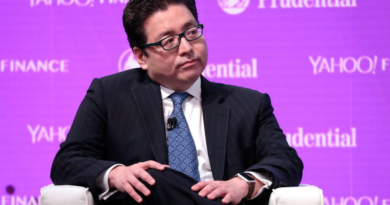You may not have a yacht, but you can have access to some of the strategies advisors to high-net-worth families give their clients
High-net-worth families have a plethora of opportunities the rest lack—and one of the most important factors that help the richest stay the richest is access to top financial planning. Advisors who work with high-net-worth clients help them manage their fortunes, but they rules they rely on can help the rest of us, too.
In fact, advisors emphasized that many of the most effective strategies they use with their clients, they would give to their own children as well—and you don’t need a private jet or a yacht to implement them. “My practice focuses primarily on working with high-net-worth families. However, I can say unequivocally that the best strategies for managing money are equally applicable to all levels of wealth,” said Jonathan Shenkman, advisor at Shenkman Wealth Management.
“Maintaining a healthy relationship with finances and money is the base of a successful investment and financial strategy for high-net-worth individuals and all investors, young and seasoned,” added Colleen O’Callaghan, Wealth Partner at J.P. Morgan Wealth Management.
Balance out your assets
Figuring out your asset allocation is an important first step in building your portfolio, and having a diversified portfolio is one of the best strategies for wealth accumulation. “The first component is getting the big picture asset allocation correct, namely how much exposure you want to stocks, bonds, and cash in order to achieve your goals,” explained Shenkman.
Your personal asset allocation depends on both your time horizon, your investing goals, and your tolerance to risk. “As we saw in 2022, capital markets (both equities and bonds) can be very volatile,” explained Heather Wald, Partner at Bel Air Investment Advisors. “If your tolerance for volatility is low, meaning you feel uncomfortable with the short-term price movements of your investments, your portfolio’s exposure to risk assets—such as stocks—should reflect that sentiment,” she added.
It’s also important to rebalance your assets and avoid portfolio drift. For example, as the market ebbs and flows, a portfolio that 60% of your assets in stock and 40% in bonds could become 70% in stocks and 30% in bonds over the course of a year.
Diversification does not just apply to asset classes, but what you actually invest in, too. While it can be tempting to jump on the bandwagon of investing fads that look like potential growth opportunities, advisors explained that your best bet to accumulate wealth is to invest slowly and steadily. “Utilize broad market indexes as the core of your portfolio to help minimize risk and mitigate many common investment errors,” Shenkman explained. “A long-term investment portfolio can be complimented by some opportunistic trading, but chasing trends or piling onto the “next big thing” is not a strategy,” explained O’Callaghan.
Prioritize cash flow
No matter what your income or net worth is, it’s crucial that you have enough access to cash so you don’t end up having to pull money from your assets to address day-to-day needs. “Many wealthy individuals have investment portfolios designated for growth because they also have components of their personal balance sheet to cover their needs,” said O’Callaghan. “These investors can allow their investments to grow instead of having to sell them when the unexpected happens because they have a safety net.” Though your portfolio may have fewer zeros, the same principle applies.
Advisors recommend having enough in your savings account to fund at least three to six months of living expenses. By paying yourself first and automating your savings account, you can automatically pull from your income to pay off debt or add cash to a specific savings account. A common recommendation to save enough for retirement is to invest 15% of your income each year, but any amount you invest will go a long way if you let the interest compound.
Take the emotion out of investing
Many of the biggest investing mistakes advisors see young people make are not necessarily strategic miscalculations, but decisions driven by emotion. While seasoned investors are used to the ups and downs of market cycles, newer investors can be easily alarmed watching their portfolio tank during a bear market. “[Historical perspective] is one of the biggest differences that I see between earlier investors and investors who have a fair amount of experience,” Modernist Financial advisor Georgia Hussey told Fortune. “For example, I have a client who is 80, and the current inflation and rising interest rate market is not bothering him at all,” she explained. “The first thing that my high-net-worth clients do is that they can put the noise within context, and usually just ignore it.”
Keeping a level head when the economy starts to go south is a skill that all savvy investors have to learn. “Panic selling out of a down market and converting paper losses to realized losses can impair the overall portfolio,” explained Wald. “Trying to time the market is often a losing game—not only do you have to time getting out at the right time, but then you need to time getting back in to participate in the ensuing recovery.”
Shenkman explained that young investors can combat mistakes driven by anxiety about the market by removing the emotional component and simply automate their investments from their bank account. “Automating your strategy to remove emotion from your investment process is imperative,” said Shenkman. “This includes automating deductions from every paycheck into your retirement and taxable accounts to ensure you are buying at every stage of the market or economic cycle and avoiding trying to time the market,” he added.
Overall, advisors emphasize that the earlier you start, the better of you’ll be when it comes to investing. “The most powerful advice I try to impart to my own children is an appreciation of compound interest, or the interest one earns on interest. It’s important for young investors to understand that the biggest asset they have is time,” Shenkman said.
Learn how to navigate and strengthen trust in your business with The Trust Factor, a weekly newsletter examining what leaders need to succeed. Sign up here.




